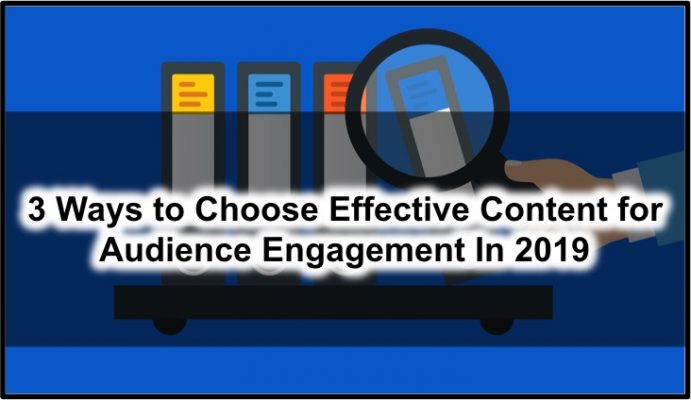Harnessing the Power of User-Generated Content: A Comprehensive Guide
In today’s digital age, user-generated content (UGC) has emerged as a potent force that can shape the success of businesses, brands, and online communities. Leveraging the creativity and authenticity of users, UGC has the potential to significantly impact marketing strategies, engagement levels, and brand loyalty. This comprehensive guide, brought to you by Elevate Your Online Presence: Impressive SEO Agency, delves into the world of user-generated content, exploring its benefits, strategies for effective implementation, and best practices to maximize its potential.
Table of Contents
- What is User-generated content (UGC)
- The Benefits of User-Generated Content
- Authenticity and Credibility
- Enhanced Engagement
- Cost-Effectiveness
- Expanding Reach and Awareness
- Types of User-Generated Content
- Social Media Posts
- Reviews and Testimonials
- Photos and Videos
- Blogs and Articles
- Crafting a Successful User-Generated Content Strategy
- Defining Your Objectives
- Choosing the Right Platform
- Encouraging and Incentivizing Participation
- Moderation and Guidelines
- Showcasing User-Generated Content
- Best Practices for User-Generated Content Campaigns
- Establish Clear Guidelines
- Leverage Hashtags and Challenges
- Collaborate with Influencers
- Highlight Customer Stories
- Provide Recognition and Rewards
- Case Studies: Brands Excelling with User-Generated Content
- Starbucks’ “White Cup Contest”
- GoPro’s Customer-Captured Adventures
- Airbnb’s User-Generated Travel Guides
- Potential Challenges and How to Overcome Them
- Quality Control and Brand Alignment
- Dealing with Negative or Inappropriate Content
- Legal and Copyright Concerns
- Measuring the Impact of User-Generated Content
- Engagement Metrics
- Reach and Impressions
- Conversion Rates and Sales
- Conclusion
What is User-generated content (UGC)
User-generated content (UGC) refers to any form of content—such as text, images, videos, reviews, and social media posts—that is created by individuals rather than brands or organizations. With the rise of social media platforms and online communities, UGC has become an integral part of the digital landscape. It provides an opportunity for consumers to actively participate in brand-building, while also offering businesses an authentic way to connect with their audience.
The Benefits of User-Generated Content
Authenticity and Credibility
Authenticity is a cornerstone of successful marketing in today’s consumer-centric world. User-generated content offers a genuine portrayal of a brand’s products or services, as it is created by real customers who have experienced them. This level of authenticity builds trust and credibility among potential customers, making them more likely to engage with the brand.
Enhanced Engagement
UGC has the remarkable ability to captivate and engage an audience. When users see their peers sharing their experiences, they are more inclined to join the conversation, comment, share, and even create their own content. This heightened engagement fosters a sense of community and loyalty around the brand.
Cost-Effectiveness
Traditional marketing campaigns can be costly endeavors, but UGC offers a cost-effective alternative. Brands can tap into the creativity of their users to produce compelling content without the hefty price tag. This not only saves on production costs but also leads to a higher return on investment (ROI).
Expanding Reach and Awareness
When users create content related to a brand and share it on their personal social media accounts, the brand’s reach expands exponentially. UGC acts as a word-of-mouth endorsement, introducing the brand to new audiences and increasing overall awareness.
Stay tuned for the next section, where we explore the various types of user-generated content and how they can be harnessed for maximum impact.
Types of User-Generated Content
User-generated content comes in a diverse range of forms, each with its own unique benefits and potential for engagement. Understanding these types is crucial for devising an effective UGC strategy.
Social Media Posts
Social media platforms are hubs of user-generated content. From Instagram photos to Twitter mentions and Facebook posts, users often share their experiences and interactions with brands. Encouraging users to tag the brand or use specific hashtags can help aggregate and amplify these posts, creating a virtual community around the brand.
Reviews and Testimonials
Customer reviews and testimonials are valuable forms of UGC that provide insights into a brand’s products or services. Positive reviews can serve as powerful endorsements, while constructive feedback presents an opportunity for improvement. Brands can highlight these reviews on their websites and marketing materials to build credibility.
Photos and Videos
Visual content, such as user-generated photos and videos, can be particularly impactful. Customers showcasing their experiences through imagery can be highly engaging and relatable. Brands can feature this content on their websites or social media profiles, effectively turning customers into brand advocates.
Blogs and Articles
Some users may take their engagement a step further by creating in-depth content, such as blogs or articles, about their experiences with a brand. These pieces can provide a more comprehensive look at the brand’s offerings and can be shared on various platforms, driving traffic and awareness.
Crafting a Successful User-Generated Content Strategy
Effectively harnessing the power of user-generated content requires a well-defined strategy. Here are the key steps to consider:
Defining Your Objectives
Determine what you aim to achieve through UGC. Are you looking to increase brand awareness, drive sales, or foster a sense of community? Clearly defined objectives will guide your approach.
Choosing the Right Platform
Identify the platforms where your target audience is most active. Different platforms cater to different types of content, so selecting the right ones is crucial.
Encouraging and Incentivizing Participation
Motivate users to create content by offering incentives, such as discounts, exclusive access, or the chance to be featured on your official channels.
Moderation and Guidelines
Establish clear guidelines for UGC creation to ensure consistency and brand alignment. Implement a moderation process to filter out inappropriate or irrelevant content.
Showcasing User-Generated Content
Highlight UGC across your marketing channels—website, social media, emails, etc. This not only rewards contributors but also encourages others to participate.
Best Practices for User-Generated Content Campaigns
Creating successful UGC campaigns involves following best practices that maximize engagement and impact:
Establish Clear Guidelines
Clearly communicate what type of content you’re seeking and any specific rules or criteria for participation.
Leverage Hashtags and Challenges
Create branded hashtags and challenges to encourage users to participate and make it easier to track and share UGC.
Collaborate with Influencers
Partner with social media influencers or industry experts to amplify your UGC campaign and reach a wider audience.
Highlight Customer Stories
Share user stories that showcase real-life experiences with your brand, creating a personal connection.
Provide Recognition and Rewards
Acknowledge and reward users who contribute UGC. This can be through features, shout-outs, or even exclusive rewards.
Case Studies: Brands Excelling with User-Generated Content
Let’s take a closer look at three brands that have successfully harnessed the power of UGC:
Starbucks’ “White Cup Contest”
Starbucks invited customers to decorate their iconic white cups, leading to a surge of creative designs shared on social media. This campaign highlighted customer creativity and strengthened brand loyalty.
GoPro’s Customer-Captured Adventures
GoPro encouraged users to share their action-packed videos taken with their cameras. The campaign not only showcased the camera’s capabilities but also created a community of adventure enthusiasts.
Airbnb’s User-Generated Travel Guides
Airbnb leveraged user-generated travel guides, allowing hosts and guests to share insider tips and recommendations. This not only enhanced the travel experience but also positioned Airbnb as a platform that values its community’s expertise.
Stay tuned for the next sections, where we delve into potential challenges of UGC and how to measure its impact on your brand.
Potential Challenges and How to Overcome Them
While user-generated content offers immense benefits, it also presents potential challenges that brands should be prepared to address:
Quality Control and Brand Alignment
Maintaining consistent quality and ensuring UGC aligns with your brand’s values and image can be a challenge. Implement clear guidelines and a moderation process to filter out content that doesn’t meet your standards.
Dealing with Negative or Inappropriate Content
There’s always a possibility of receiving negative or inappropriate content from users. Have a plan in place to handle such instances promptly and professionally.
Legal and Copyright Concerns
Ensure that you have the necessary rights and permissions to use user-generated content, especially if it includes copyrighted material. Clearly outline the terms of use when users submit content.
Measuring the Impact of User-Generated Content
Measuring the success of your UGC campaigns is essential to understand their impact and make informed decisions. Key metrics to consider include:
Engagement Metrics
Track likes, shares, comments, and other forms of engagement to gauge how effectively your UGC is resonating with your audience.
Reach and Impressions
Monitor how far your UGC is spreading across social media and other platforms, giving you insights into your campaign’s reach.
Conversion Rates and Sales
Measure how UGC influences your conversion rates and sales. Track the number of users who engage with UGC and subsequently make a purchase.
Conclusion
User-generated content has become a dynamic and influential force in today’s digital landscape. Brands that embrace the power of UGC can establish deeper connections with their audience, enhance brand credibility, and drive engagement and sales. By understanding the various types of UGC, crafting a well-defined strategy, and following best practices, businesses can tap into the authentic creativity of their users to propel their success forward.
Remember, successful UGC campaigns require careful planning, active engagement, and ongoing monitoring. As technology and consumer behavior continue to evolve, adapting your UGC strategy accordingly will be key to staying ahead in the ever-changing digital world. So, harness the power of user-generated content and unlock its immense potential for your brand’s growth and success.





